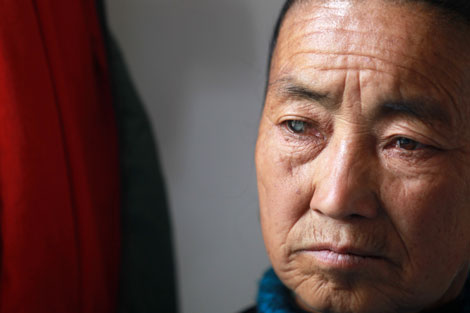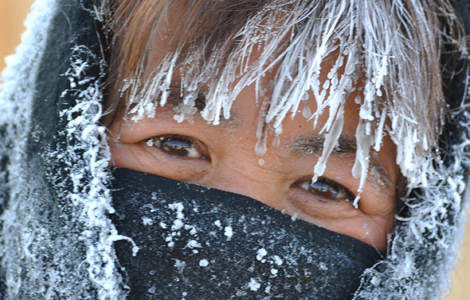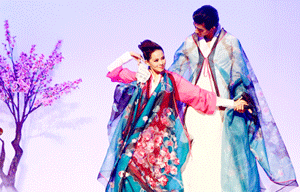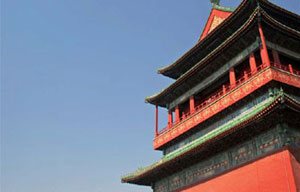Vuitton sees growth linked to exclusive luxury treatment
Updated: 2011-11-16 07:57
(China Daily)
|
|||||||||
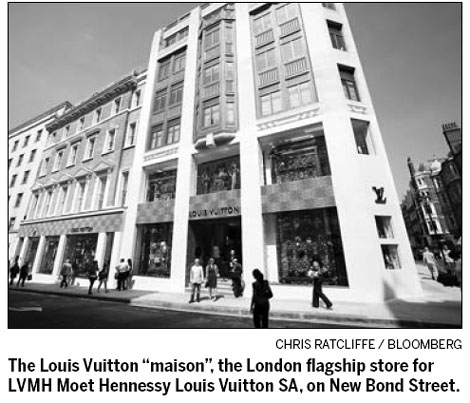
PARIS - Some Louis Vuitton clients are more equal than others.
The label's most valued customers are allowed access to a luxury apartment perched above its New Bond Street store in London. The chosen few, admitted by invitation, can curl up on couches amid artwork by Jean-Michel Basquiat and Gilbert & George and order drinks from a butler while personal stylists tout the brand's latest monogrammed wares.
"What we have now is another layer on the cake," said Peter Collett, a psychologist and consultant. "You're not just bringing people into the shop, where anybody can come. You're going to bring people into the inner sanctum."
Six years ago, Vuitton introduced a larger store format known within the company as a "maison" after the French word for house. LVMH Moet Hennessy Louis Vuitton SA, its Paris-based parent company, has risen more than 75 percent since.
No riffraff
This kind of space is "where you go and do private shopping and don't have to mix with the riffraff", said Peter Mace, a partner in charge of London retail leasing at broker Cushman & Wakefield Inc.
"In the process of taking somebody into this apartment, you've got to theatrically create the impression that this is somewhere where nobody or very few people go," said Collett, the psychologist and consultant. "It's got something to do with escalating exclusivity."
Vuitton doesn't say how it discriminates among customers, though the onus is probably on its sales employees to separate "the wheat from the chaff", according to Collett.
The sifting process is easier at Singapore's Marina Bay Sands shopping complex, where Vuitton opened its first flagship store in Southeast Asia in September. The glass and steel pavilion, "the maison of the traveler with a nautical spirit", has a jetty for clients who want to shop by yacht.
Making customers feel special is good business for Vuitton. The 157-year-old company has one of the industry's highest average sales per store. The clothing and accessories maker generates 12.7 million euros ($17.4 million) of sales on average per store, HSBC Holdings PLC estimates.
Flagship stores also serve as advertisements for brands on the world's most famous shopping streets. That's increasingly important as Chinese demand for products ranging from $814 cashmere scarves to $4,367 Sofia Coppola-designed leather handbags soars at home and abroad.
Vuitton brought in 28 percent of LVMH's revenue last year and 57 percent of earnings before interest and taxes, HSBC estimates. LVMH, which doesn't break out figures by brand, reported a 13 percent increase in fashion and leather goods sales in the first nine months of 2011. LVMH is confident for the future even as concerns grow that European shoppers may pare spending, Finance Director Jean-Jacques Guiony said last month.
'Wow' factor
Luxury companies need "to have something that has a real 'wow' factor that will get people to come and visit" their stores, Mace said. "Some brands make money out of stores, some don't. But it's an advertisement to the world."
New stores will add $3.8 billion of worldwide personal luxury goods sales to this year's total from the $5.8 billion they added in 2010 as the industry grows 10 percent, Bain & Co estimates.
Making a statement comes at a price. Luxury brands spend as much as $12,400 a square meter to refurbish their stores in the UK capital, Mace said. He figures Vuitton's London outlet probably cost more than $50 million to fit out.
With rents running as high as $17,700 per square meter in the neighborhood, devoting space to culture and comfort can be an expensive proposition, according to Mace.
"The surrounding is as important as the product," Collett said. Mixing art and luxury to "create a little bubble" leads clients to feel special, he said. "It's fantasian."
Bloomberg News



